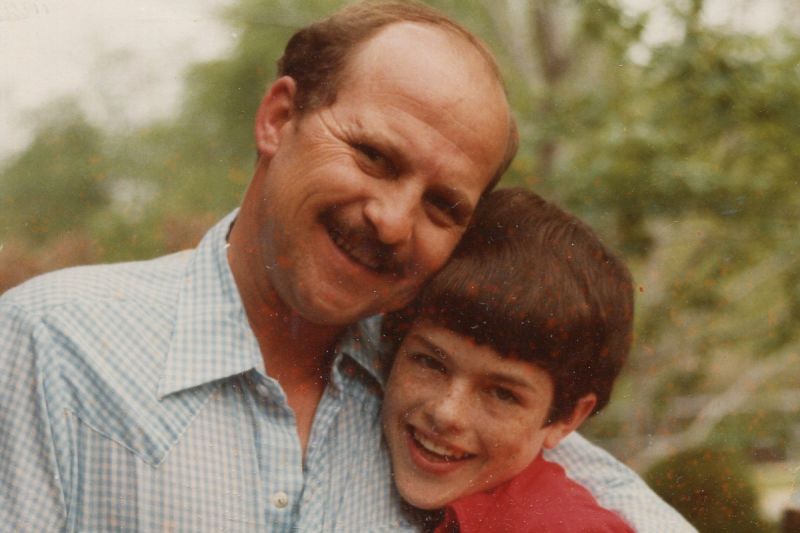Transracial Times Two - How One Family Adopted Two Children of a Different Race
Ty, Ann, Kai and Avery’s Story
Like many prospective adoptive families, Ty and Ann knew that it isn’t the physical similarities that make a family; it’s the ability to provide a loving, nurturing environment where parents and children can feel accepted and cared for. So, when it came time for Ty and Ann to choose possible races for their adopted child on their APQ, they knew they didn’t need a restriction.
“When we started out in the process, we were open to any race or ethnicity, so we were just very excited to be parents and have a family,” says Ann. “We’ve learned a lot in our family, and we’ve definitely grown for the better.”
Today, Ty and Ann are white parents to two happy African-American children: Kai, 4-and-a-half years old, and Avery, 3 years old. While raising transracially adopted children hasn’t been easy every step of the way, it’s a journey they wouldn’t trade for anything else.
Finding “Mirrors” and a Community for their Children

Ty and Ann didn’t start their adoption journey with American Adoptions (although looking back, they say they wish they had). They began with a smaller, regional adoption agency. After they expressed their interest in transracial adoption, they were required to take a class for prospective transracial adoptive parents. The class, presented by Bridge Communications, would prepare them for certain situations and provide resources they say were invaluable once they moved to work with American Adoptions.
“We came into it fairly naïve; we were just interested in growing a family,” Ty says. “We weren’t really that concerned whether that person was going to look like us or not. But, after taking the teleconference class and discussing it with a bunch of people, it did a lot to remind us of the extra challenges that you might not be aware of.”
But Ty and Ann also had to take personal steps to make sure they — and their community — were prepared for the challenges of a transracial adoption. They moved to a more diverse neighborhood and actively sought out diverse situations that pushed them out of their own comfort zone, all to make sure that their children had the opportunities they deserved. For example, they attend a black church and swim at a pool where a majority of the kids are black and it is Ty and Ann who look a bit out of place.
Like any parents, they were prepared to do anything for their children. As they described it, it’s all about finding “mirrors” that their African-American children can see themselves in, like role models and peers.
“We don’t want them to be the ones in the family feeling uncomfortable or like someone that sticks out,” says Ann.
“We do a lot of things to expose the kids to more diverse environments that we maybe wouldn’t have done if we hadn’t taken this route,” says Ty. “It definitely makes us think a lot and consider our actions and change our perspectives on a lot of things.”
But even after adopting Kai in 2013 and having a year to raise a transracially adopted child on their own, Ty and Ann had to take some additional steps when they brought Avery into their home in May of 2014. Whereas the challenge with Kai’s hair was just getting him to a barber and sitting still, Avery’s hair required Ty and Ann to learn exactly how to care for it and keep it beautiful and healthy in twists, braids and puffs.
Even though both Ty and Ann have family who has adopted transracially and internationally and draw confidence from that, they do recognize that the hardest parts of their adoption are likely still to come.
“Every day we’re trying to navigate something new,” Ann says. “They’re going to go to school, and we might not always know how to respond to racism and micro-aggressions ourselves. But it’s about being able to help our children navigate that and making sure they have the right mentorship in the black community….We’re always trying to learn as much as we can.”
Navigating Two Different Adoption Stories
In addition to the challenges of transracial adoption, Ty and Ann are also discovering the challenges of raising two children with very different open adoption contact so far in their lives. While one birth mother exchanges visits and phone calls with the family, the other only receives pictures and letters mediated by the adoption agency.
At their young age, Kai and Avery don’t comprehend those differences yet, but their parents know the discussion will come up one day and are preparing as best as possible, especially if changes in their children’s birth mother contact arise.
“You can never really predict what the contact levels will be,” says Ann. “You have to realize that feelings are going to change over time, and families and birth parents have very complicated lives and social structures.”
“Once the kids are placed, it’s so clearly about what’s going to be best for them in the future,” Ty adds.
It’s a motto that Ty and Ann believe applies to every part of their adoption. Even if it involves sacrifices on their end, they’re happy to do it if it benefits their children.
“You have to think about what your community looks like and what your own family looks like,” Ann says. “Love is not enough.”
“It takes a little bit of a step outside to look at the situation and ask, ‘Are these kids going to thrive in the environment I can build for them?’” Ty says.
Ann adds: “Are you willing to change your life to make that happen for them?”
Disclaimer
Information available through these links is the sole property of the companies and organizations listed therein. American Adoptions provides this information as a courtesy and is in no way responsible for its content or accuracy.

